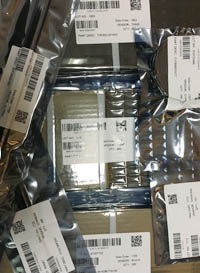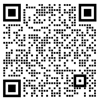| Part Number | C8051F126-GQR |
|---|---|
| Manufacturer | Silicon Labs |
| Description | IC MCU 8BIT 128KB FLASH 100TQFP |
| Datasheet | |
| Package | 100-TQFP |
| ECAD |
|
| In Stock | 77,508 piece(s) |
| Unit Price | $ 24.8398 * |
| Lead Time | Can Ship Immediately |
| Estimated Delivery Time | Apr 26 - May 1 (Choose Expedited Shipping) |
| Request for Quotation |
|
| Payment Methods | |
| Delivery Services |
Part Number # C8051F126-GQR (Embedded - Microcontrollers) is manufactured by Silicon Labs and distributed by Heisener. Being one of the leading electronics distributors, we carry many kinds of electronic components from some of the world’s top class manufacturers. Their quality is guaranteed by its stringent quality control to meet all required standards.
For C8051F126-GQR specifications/configurations, quotation, lead time, payment terms of further enquiries please have no hesitation to contact us. To process your RFQ, please add C8051F126-GQR with quantity into BOM. Heisener.com does NOT require any registration to request a quote of C8051F126-GQR.
Stet*****Wilson
March 31, 2023
Cros*****ohal
March 24, 2023
Jaco*****weeney
March 10, 2023
Marjo*****revino
March 3, 2023
Gera*****anka
February 25, 2023
Vivie*****udley
February 23, 2023





We guarantee 100% customer satisfaction.
Our experienced sales team and tech support team back our services to satisfy all our customers.

We provide 90 days warranty.
If the items you received were not in perfect quality, we would be responsible for your refund or replacement, but the items must be returned in their original condition.
| Part Number | Manufacturer | Description | Stock |
C8051F126-GQR D# V36:1790_06533201 |
Silicon Laboratories Inc |
8051 50 MHz 128 kB 8-bit MCU RoHS: Compliant
|
0 |
| Part Number | Manufacturer | Description | Stock |
C8051F126-GQR |
Silicon Labs Isolation Inc |
STOCK |
340 |
| Part Number | Manufacturer | Description | Stock |
C8051F126-GQR |
Silicon Laboratories Inc |
Silicon Labs C8051F126-GQR |
250 |
| Part Number | Manufacturer | Description | Stock |
C8051F126-GQR D# C8051F126-GQR-ND |
Silicon Laboratories Inc |
IC MCU 8BIT 128KB FLASH 100TQFP |
0 |
| Part Number | Manufacturer | Description | Stock |
C8051F126-GQR |
Silicon Laboratories Inc |
In stock shipping within 2days |
530 |
| Part Number | Manufacturer | Description | Stock |
C8051F126GQR |
Silicon Laboratories Inc |
OEM/CM QUOTES ONLY | NO BROKERS |
13800 |
| Part Number | Manufacturer | Description | Stock |
C8051F126GQR |
Maxim Integrated Products |
OEM/CM ONLY |
2141 |
| Part Number | Manufacturer | Description | Stock |
C8051F126-GQR |
Silicon Laboratories Inc |
series Microcontroller IC RoHS: Compliant
|
25560 |
| Part Number | Manufacturer | Description | Stock |
C8051F126-GQR D# NS-C8051F126-GQR |
Silicon Laboratories Inc |
OEM/CM ONLY |
8116 |
| Part Number | Manufacturer | Description | Stock |
C8051F126GQR |
Silicon Laboratories Inc |
OEM/CM ONLY |
2306 |
| Part Number | Manufacturer | Description | Stock |
C8051F126-GQR |
Silicon Laboratories Inc |
50MIPS,128KB,10ADC,100Pin MCU |
0 |
| Part Number | Manufacturer | Description | Stock |
C8051F126-GQR |
Silicon Image Inc |
shipping today |
922 |
| Part Number | Manufacturer | Description | Stock |
C8051F126-GQR |
Silicon Laboratories Inc |
IC MCU 8BIT 128KB FLASH 100TQFP |
963 |
Heisener's commitment to quality has shaped our processes for sourcing, testing, shipping, and every step in between. This foundation underlies each component we sell.

Do you have any question about C8051F126-GQR?
86-755-83210559-817



Scan to view this page